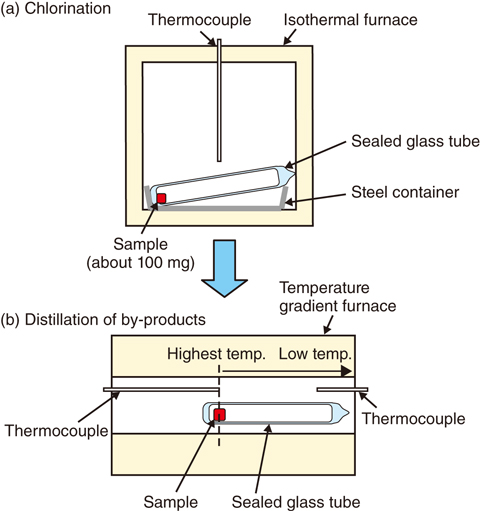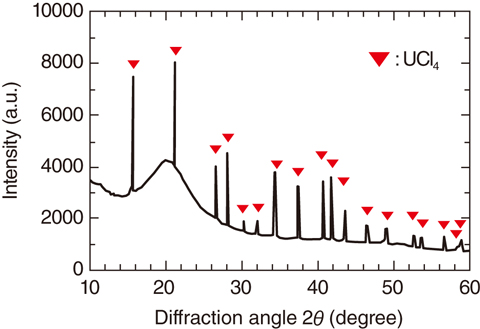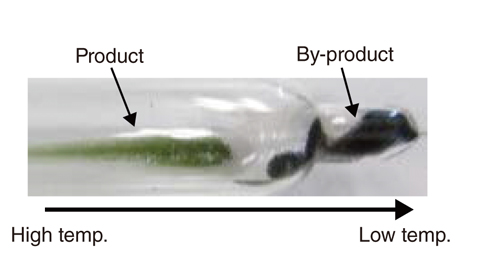
Fig.1-18 Outline of a chlorination experiment with fuel debris from MoCl5

Fig.1-19 XRD profiles of the product obtained from a reaction between (U0.5Zr0.5)O2 and MoCl5

Fig.1-20 Appearance of the product after separation of by-products
As a result of the accident at the TEPCO’s Fukushima Daiichi NPS, the treatment of fuel debris generated by solidification of melted fuels has been studied. One possible treatment option that has been proposed is the application of pyrochemical reprocessing technologies of spent nuclear fuels to treat fuel debris. According to the pyrochemical method, uranium and plutonium in spent fuels are separated from fission products and recovered to a cathode by electrolysis in a molten salt. A large issue with this method is the development of a pretreatment technique for converting fuel debris into chlorides.
Conventional chlorination techniques using chlorine gas over 873 K require the use of corrosion-resistant structural materials. In contrast, the chlorination technique using molybdenum pentachloride (MoCl5) is expected to have advantages such as a lower reaction temperature, ease of handling the solid MoCl5. By-products of this method can also be efficiently separated from chloride products by distillation.
In this study, we propose a new chlorination method of fuel debris using MoCl5 and study the applicability of this method through basic experiments.
Using uranium–zirconium oxide solid solution ((U0.5Zr0.5)O2) powder and sintered pellets as simulated fuel debris, chlorination experiments with MoCl5 were conducted and the reaction principle of uranium chlorination and separation of by-products by distillation (Fig.1-18) were confirmed.
Regarding the chlorination reaction, most uranium in the sample was successfully converted to uranium tetrachloride (UCl4) at 573 K (for the powder) or 773 K (for the sintered particles) based on the following equation (Fig.1-19):
2(U0.5Zr0.5)O2 + 4MoCl5 → UCl4 + ZrCl4 + 4MoOCl3
By-products of this reaction include MoOCl3 and zirconium tetrachloride (ZrCl4). These were successfully separated from UCl4 by distillation at 573 K (Fig.1-20).
On the basis of these results, we proposed a new chlorination method for fuel debris using MoCl5 and confirmed its applicability in principle.
These results were obtained in accordance with the project for development of the fuel debris characterization and treatment technologies as funded by the Agency for Natural Resources and Energy, Ministry of Economy, Trade and Industry of Japan (METI).